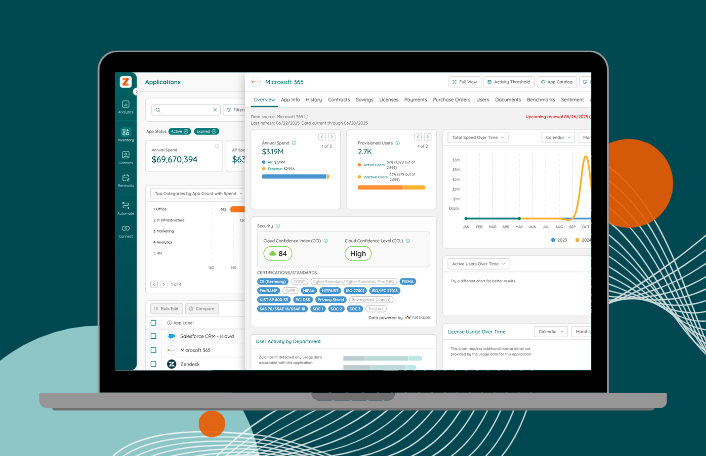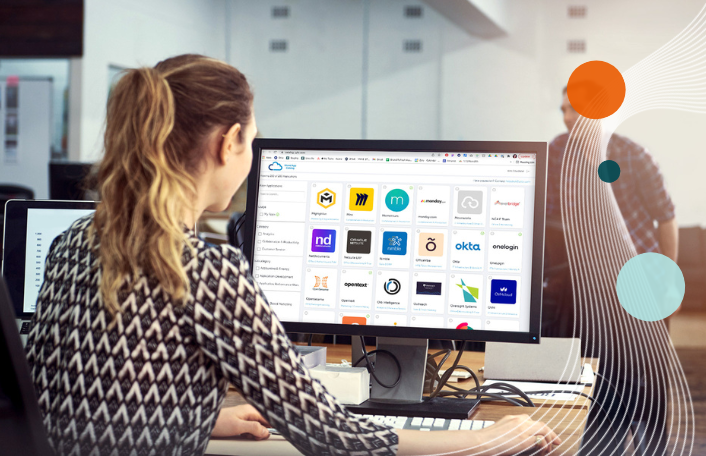
Get Microsoft 365 License Management Right with Zylo
Table of Contents ToggleThe Subscription Economy Has Gone ConsumerThe Future of...
Back
Back
Search for Keywords...
Blog

Table of Contents
What if we told you that in just a few years from now, enterprise organizations will be subscribing to more things than they’ll be buying?
Today, enterprise organizations still purchase products and services, even though SaaS and cloud-based applications rule the majority of new software. But in the future, while we may still refer to decision makers as buyers or purchasers, they’ll be subscribing more often than actually buying. Maybe that comes as a shock to you, but perhaps not, due to the changing SaaS landscape executives have witnessed even in just the last several years.
The “Subscription Economy”, as it’s sometimes called, has many benefits to buyers, such as always-updated products and services, an intense focus on customer success, and the ability to stop the subscription, add users, or move to another solution without hassle. And for sellers of SaaS and cloud-based products and services, they too have many benefits, such as the ability to scale quickly, flexibility in architecture and ease of updates, and stronger customer relationships.
Subscribing has even become second nature in the consumer world, even more so than the enterprise business world. Consumers in today’s always-connected, no long-term-contracts world subscribe to watch their favorite tv shows, to gym members and even fitness apps on their phones, to monthly box subscriptions for their pets, and even to 3rd party drivers, sometimes opting to ride via Uber instead of owning their own vehicle.
While it may seem radical that the shift to the subscription economy is happening so quickly, the reason is because of the many benefits it provides to all involved. In fact, Tien Tzuo, co-founder and CEO of Zuora, shared in a recent Small Biz Trends article his predictions that within five years we won’t be buying anything. “You won’t be buying cars. You won’t be buying furniture. You won’t be buying clothes you simply subscribe to the services you need and somebody else will take care of these things and all you want is the outcome. In this frees you up to really do what you love and do what you want.”
Similarly to the consumer world, any executive or CIO in today’s digital world can tell you that the world of SaaS is continuing to shift and pivot the way companies conduct business—and most of the time for the better. Across all industries, employees and contractors are more connected than ever before, customers and patrons expect a higher level of service, and executives and management teams have data available at their fingertips to make the best decisions for the business at any given moment. These innovations have allowed everyone across the spectrum of business—whether B2B or B2C—to operate more efficiently and with better accuracy.
It’s not just that new technologies and SaaS products are being introduced to the market more rapidly than ever before, but executives are purchasing these tools and implementing them at a faster pace due to the value they see in each new platform or tool. Take for instance this staggering statistic from a recent Gartner report:
“Cloud application services (SaaS) is forecast to grow 20.3 percent in 2016, to $37.7 billion. As software vendors shift their business models from on-premises licensed software to public cloud-based offerings, this trend will continue.”
In the article, Tien shared that he agrees the subscription economy is picking up steam, and won’t be slowing down, even as it relates to enterprise business. Tien commented, “Five years ago we were just really starting off evangelizing this whole idea of subscriptions and we would go out there and talk about how you and I would not have to buy products anymore, instead that we would use services.” He went on to say, “And then five years ago we talked about how the whole technology sector has shifted over where it’s not just startups trying to build the Salesforce.com of this or Salesforce.com of that, but the whole software category has shifted to software services…. So I would say, today, we truly do live in a subscription economy and, you know, it’s played out exactly as we hoped.”
The rise of the subscription economy and the growth of SaaS has incredible benefits to organizations in today’s digital age. SaaS companies are focused on building lasting customer relationships, providing tangible value, and helping their customers achieve important KPIs and realize ROI.
While the growth of SaaS is a great thing for buyers and sellers of enterprises, there are still challenges that need to be resolved—especially before rapid explosion of SaaS growth occurs over the next several years.
For many organizations, keeping track of the sheer amount of SaaS providers that each organization counts on for sales, marketing, administration, hiring, tracking, forecasting, customer success, and more can be simply overwhelming, let alone impossible to track. Executives need a way to ensure they are getting the most from their SaaS investments, from their spending to utilization across the organization to employee feedback and beyond.
Without real-time insight into how each SaaS application is performing and how each technology investment is being utilized, how do executives know what the rise of SaaS and the subscription economy actually means to their bottom line?
ABOUT THE AUTHOR

Cory Wheeler
As Zylo’s Chief Customer Officer, Cory is responsible for helping our customers drive ROI and SaaS Management success with Zylo. He helps companies of all sizes effectively discover, optimize, and govern their SaaS through Zylo’s platform and services. Prior to founding Zylo, Cory spent 15 years in finance and procurement, managing categories and sourcing teams at Arthur Andersen, BearingPoint, and both Takeda and Astellas Pharmaceuticals. He built the procurement organization at ExactTarget, and managed the integration with the Salesforce Marketing Cloud procurement organization in 2015. He and his family reside in Indianapolis, IN, where they can be found cheering for the Purdue Boilermakers and Chicago Cubs.

Table of Contents ToggleThe Subscription Economy Has Gone ConsumerThe Future of...

Table of Contents ToggleThe Subscription Economy Has Gone ConsumerThe Future of...

Table of Contents ToggleThe Subscription Economy Has Gone ConsumerThe Future of...

Table of Contents ToggleWhat Is a GTM Tech Stack?Why a Go-to-Market...
| Cookie | Duration | Description |
|---|---|---|
| cookielawinfo-checkbox-analytics | 11 months | This cookie is set by GDPR Cookie Consent plugin. The cookie is used to store the user consent for the cookies in the category "Analytics". |
| cookielawinfo-checkbox-functional | 11 months | The cookie is set by GDPR cookie consent to record the user consent for the cookies in the category "Functional". |
| cookielawinfo-checkbox-necessary | 11 months | This cookie is set by GDPR Cookie Consent plugin. The cookies is used to store the user consent for the cookies in the category "Necessary". |
| cookielawinfo-checkbox-others | 11 months | This cookie is set by GDPR Cookie Consent plugin. The cookie is used to store the user consent for the cookies in the category "Other. |
| cookielawinfo-checkbox-performance | 11 months | This cookie is set by GDPR Cookie Consent plugin. The cookie is used to store the user consent for the cookies in the category "Performance". |
| viewed_cookie_policy | 11 months | The cookie is set by the GDPR Cookie Consent plugin and is used to store whether or not user has consented to the use of cookies. It does not store any personal data. |
